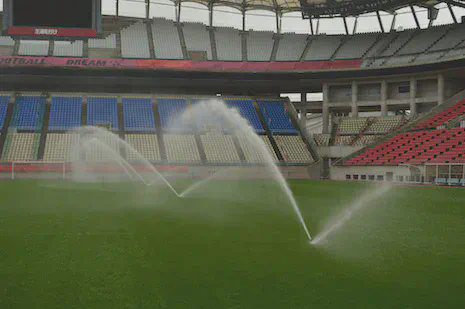On the seductive attractions of metric units
Growing up and first working in the turfgrass industry in the United States, I naturally used US customary units: inches and feet, pounds and ounces, fluid ounces and gallons and so on. I started to use metric units when I went to work as a golf course superintendent in China and Japan, and I have been using these units ever since.
I like to use the square meter (1 m2) as the base unit. There are a few reasons for this.
First, I can see one square meter, I can imagine it, and I can think of how that base unit will be managed. Then it is simply a matter of considering how many of those base units of 1 m2 are to be managed.
Second, the numbers work out in a convenient way in three dimensional space. I’ll elaborate on the convenience of this below.
Third, I like to work with numbers from 1 to 100, as much as possible, and working with 1 m2 as the base unit is convenient in this way. Nitrogen might be applied at about 3 g per m2 per month; in Thailand one might apply 30 to 50 grams of nitrogen per m2 in a year. Wetting agents will be applied at about 2 mL per m2. Spray volumes will usually be from 40 to 80 mL per square meter. These numbers fall in a range that is easy to work with, and easy to think about. There are no 100s, no 1000s, no 10,000s, and few numbers less than 1.

Now for the three dimensonal space of the rootzone. For managed turfgrass, the root system, averaged over the course of a year, can be considered to be 10 cm deep. This is where most of the nutrients will be taken up, where the grass will obtain water, where coring and cultivation practices will be done. Maybe you will like to use a rootzone depth of 7.5 cm, or 15 cm, or 30 cm. That’s fine, and can be done, but using 10 cm has some attractive properties. 1 m2 to a depth of 10 cm has a volume of 100 L. If the volumetric water content (VWC) of the soil is 18%, that means there are 18 L of water in 1 m2 to 10 cm depth. Want to increase the soil moisture to 22%? That will require 4 L per m2.
In 2-dimensional space, this is convenient also. 1 L of water spread over 1 m2 has a depth of 1 mm. If it rains 6 mm, that is 6 L of water per m2. And if the soil VWC drops from 20% to 16% from morning to evening, that is a water loss of 4 L, equivalent to 4 mm at the surface. That’s the evapotranspiration (ET). Not some estimate from a computer, but the real consumptive water use.
Want to compare the ET of a full sun area to the ET of a shaded area? Measure the difference in VWC from morning to evening at both sites. Now you’ve got the answer.
Thinking of water application in mm and L translates directly to the VWC in the soil if one is assuming a 10 cm rootzone. Of course, a soil moisture meter may have rods at a 6 or 7.5 or 12 cm depth; one can make appropriate adjustments in assumptions and estimates.